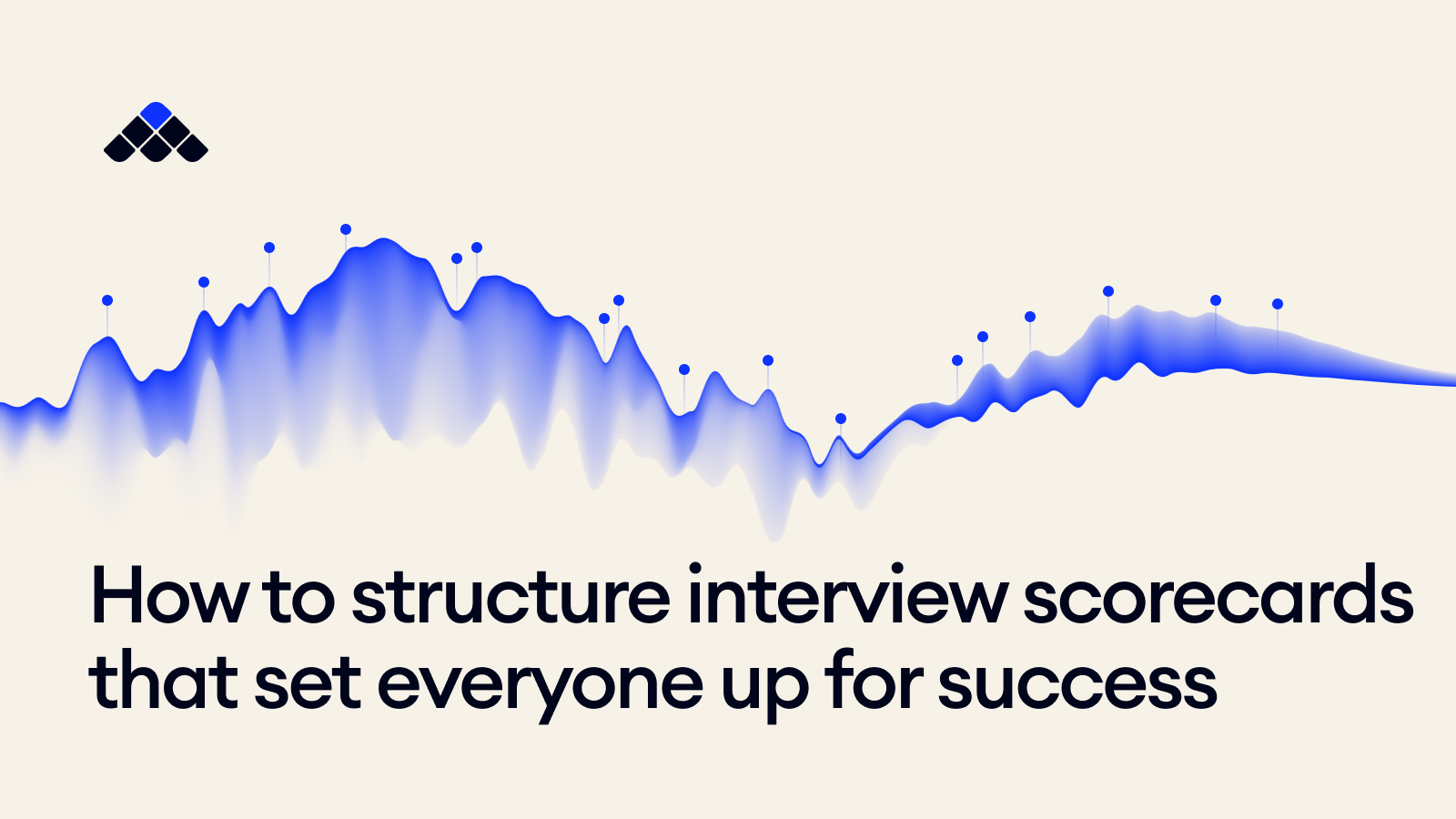If your company is still hiring, you’re most likely trying to lay the groundwork for deliberate hiring by implementing strong recruiting fundamentals. One way to do this is to consider structuring your interview scorecards to assess both the candidate's fit for the job and the company's fit for the candidate. Many scorecards follow the structure from Geoff Smart’s book Who: A method for hiring, which says that an interview scorecard should consist of 3 components: the job’s mission, the job’s outcomes, and the behavioral competencies that candidates should demonstrate to perform the job. While I agree that these 3 components are important, it’s easy for things to break down when put into practice. While recruiters might have good intentions, not all interview feedback is created equal. If you look across 10 initial recruiter screen scorecards, conducted by the same recruiter, I guarantee that there are inconsistencies in the information provided (I am guilty of this too)!
In this post I’ll share why sub-par interview scorecards usually happen, why they’re problematic, and what you can do to structure your scorecards to set everyone up for success—hiring teams and candidates included.
What causes low-quality interview scorecards
Low-quality scorecards, whether they’re sloppy, sparse, or delayed, often happen because a recruiter:
- Has back-to-back calls and not enough time to summarize their notes
- Loses their notes because the ATS doesn’t auto-save
- Only types thorough notes for candidates they’re excited about, not ones who aren’t a good fit
- Doesn’t push the hiring manager to clearly define what they’re looking for, so they’re not sure if the notes are relevant
If you can’t relate to any of these scenarios, I applaud you. However, I can imagine if you’re reading this, you’re probably nodding along in recognition.
At a minimum, recruiter scorecards usually contain a high-level “yes” or “no” recommendation and sparse bullet points summarizing the conversation. However, this type of surface-level information only really helps dictate whether a candidate should pass to the next round or not. I have fallen victim to incomplete notes and scorecards, and it becomes painful when a candidate progresses in the process and then my hiring manager asks me questions that I can’t answer. Or, if down the road I ask a candidate a question and they remind me that it’s something we already covered. If you want to avoid these mistakes, I recommend working backwards and thinking about how you can set everyone up to win. So, how can you do that?
How to structure interview scorecards that set everyone up to win
A win is not just when a recruiter “closes” a candidate. For me, winning looks like:
- A company hires the right candidate for the role, team and company
- The candidate genuinely thinks the company aligns with their interests
- Each stakeholder along the way has a positive experience
To that end, during my recruiting screens, I capture the following information in my scorecards:
- Candidate assessment and recommendation: This assessment is based on previously agreed-upon questions that map to the outcomes and competencies for the job.
- Candidate’s decision-making framework: I capture whether what the candidate is looking for is in-line with the position. If I don’t understand what’s important to the candidate until the end of the process, I’m not able to help them gather information to make a sound decision. It’s important not to forget that hiring is a two-way street.
- Hiring manager prep: I like to let the hiring manager know what I think the candidate is likely to want to know about (e.g., “Can you please discuss your management style as this seems important to the candidate?”) or questions to clarify (e.g., “The candidate asked me if the team operates in a scrum or agile way, but I’m not sure if I answered sufficiently. Could you add your perspective?”)
- VIP info: I consider this any info that would potentially prevent a candidate from being hired. For example, if they’re currently on a visa that we can’t sponsor or compensation expectations are $50k higher than the range for the role.
You might be thinking that this sounds like a lot of information to capture during one call. It is! Strategic team building is a hard job. That’s why I love using Metaview—this magical product records, transcribes, and summarizes interviews, giving you the opportunity to focus on building connections with your candidates. Plus, you'll have richer notes to work with later and can feel confident in fair assessments.
Submitting strong interview scorecards can set up your hiring manager, team, and even your future self for success. By leveraging tools like Metaview, you can leave in-the-moment note taking to AI, edit as you wish, and focus on the human aspects of recruiting.


